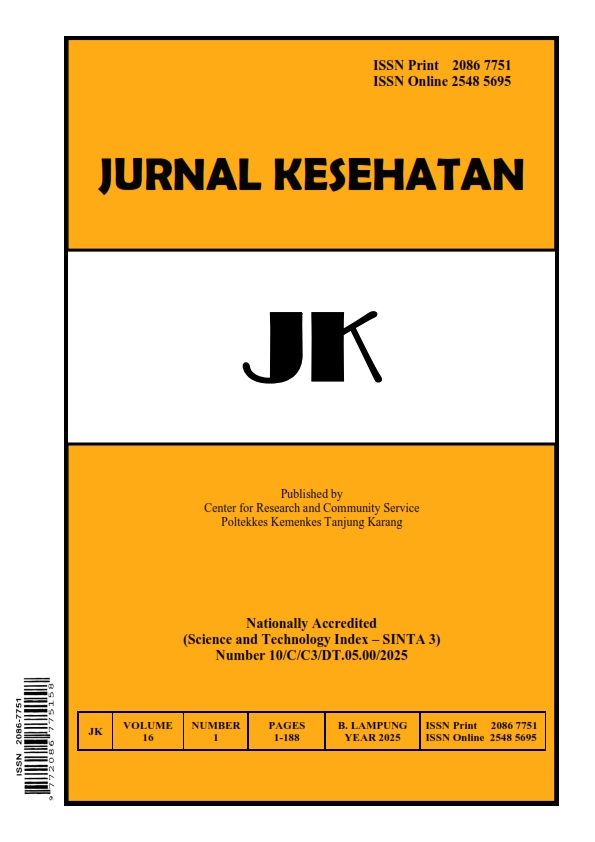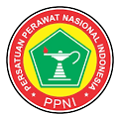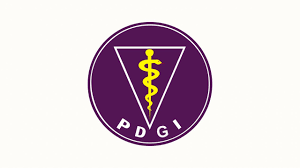Application of Supportive Therapy Group for Mental-Emotional Problems of Adolescents
DOI:
https://doi.org/10.26630/jk.v16i1.4758Keywords:
Mental health, Strengths and Difficulties Questionnaire, TeenagerAbstract
Indonesia National Adolescent Mental Health Survey (I-NAMHS) shows that one in three adolescents aged 10-17 years in Indonesia had mental health problems in the last 12 months, equivalent to 15.5 million adolescents in the country and one in 20 adolescents aged 10-17 years in Indonesia also experience mental disorders equivalent to 2.45 million adolescents in the country. Of the 120 respondents, it was found that there were several emotional and mental problems, namely, the aspect of emotional problems in the high abnormal category. This study aims to determine the effect of implementing supportive therapy on adolescent mental problems. This study employs a quantitative, quasi-experimental pre-post-test design with a control group. The inclusion criteria are divided into class A and class B. The total sample used based on the screening results is 120 adolescents. 60 adolescents from class A were given the intervention group, and 60 adolescents from class B were made the control group and did not receive group supportive therapy. The sampling technique used in this study was the total sampling technique. The instrument used was the Strengths and Difficulties Questionnaire (SDQ). The results of the study obtained a range of mental and emotional problems of adolescents in the intervention group before therapy, namely emotional problems 48.3%, behavioral problems 26.7%, peer problems 12.5%, and hyperactivity 12.5%. after therapy, emotional problems were 45%, behavioral problems 16.6%, hyperactivity 3.33%, and peer problems 13.3%. This shows that there is a significant difference between the range of mental and emotional problems after being given supportive group therapy.
References
Abdillah, C. A., & Nurhayani, N. (2023). The application of group counseling services to minimize academic stress in high school students. Bisma The Journal of Counseling, 7(1), 1-9. https://doi.org/10.23887/bisma.v7i1.59175
Christ, S. L., Kwak, Y. Y., & Lu, T. (2017). The joint impact of parental psychological neglect and peer isolation on adolescents’ depression. Child abuse & neglect, 69, 151-162. https://doi.org/10.1016/j.chiabu.2017.04.015
Diananta, G. S. (2021). Perbedaan Masalah Mental Dan Emosional Berdasarkan Latar Belakang Pendidikan Agama, Studi Kasus SMP Negeri 21 Semarang dan SMP Islam Al Azhar 14 Semarang. [Undergraduate thesis]. Semarang: Faculty of Medical, Universitas Diponegoro.
Fitri, A, N., M., & Sasmita, H. (2022). Pengaruh Terapi Suportif Kelompok Terhadap Masalah Mental Emosional Remaja. Jurnal Keperawatan Abdurrab, 6(1), 94–108.
Hidayati, E. (2012). Pengaruh Terapi Kelompok Suportif Terhadap Kemampuan Mengatasi Perilaku Kekerasan Pada Klien Skizofrenia Di Rumah Sakit Jiwa Dr. Amino Gondohutomo Kota Semarang. Prosiding Seminar Nasional & Internasional (Vol. 1, No. 1). https://jurnal.unimus.ac.id/index.php/psn12012010/article/viewFile/524/573
Indonesia – National Adolescent Mental Health Survey (I-NAMHS) Report. (2022). Center for Reproductive Health, University of Queensland, & Johns Hopkins Bloomberg School of Public Health. Center for Reproductive Health.
Kuesioner Kekuatan dan kesulitan. (2010). The Strength And Difficulties Questionnaire (SDQ). Workshop CPD III. Semarang: IDAI.
Ministry of Health Republic Indonesia. (2019). Prevelensi Masalah Mental Emosional Remaja. Jakarta.
Mubasyiroh, R, Y., I., & Putri, S. (2017). Determinan Gejala Mental Emosional Pelajar SMP-SMA di Indonesia Tahun 2015. Buletin Penelitian Kesehatan, 45, 103–112.
Mutiara. (2017). Penerapan Terapi Suportif untuk Meningkatkan Manajemen Emosi Negatif pada Individu yang Memiliki Pasangan Skizofrenia. Jurnal Muara Ilmu Sosial, Humaniora, Dan Seni, 1, 105–115.
Nasyar, A., & Ahmad, R. (2020). Self-disclosure students reveal problem in individual counseling services. Jurnal Neo Konseling, 2(3). http://dx.doi.org/10.24036/00298kons2020
Qi, M., Zhou, S. J., Guo, Z. C., Zhang, L. G., Min, H. J., Li, X. M., & Chen, J. X. (2020). The effect of social support on mental health in Chinese adolescents during the outbreak of COVID-19. Journal of Adolescent Health, 67(4), 514-518. https://doi.org/10.1016/j.jadohealth.2020.07.001
Riset Kesehatan Dasar. (2018). Laporan Nasional Riskesdas 2018. Badan Penelitian dan Pengembangan Kesehatan Riset. Jakarta.
Swastika, G. M, & Prastuti, E. (2021). Perbedaan Regulasi Emosi Berdasarkan Jenis Kelamin dan Rentang Usia pada Remaja dengan Orangtua Bercerai. Psikologika: Jurnal Pemikiran Dan Penelitian Psikologi. https://doi.org/10.20885/psikologika.vol26.iss1.art2
World Health Organization. (2005). Child and adolescent Atlas: Resources for child and adolescent mental health. Geneva: World Health Organization.
Downloads
Published
Issue
Section
License
Copyright (c) 2025 Arsad Suni, Al Azhar Muhammad, Ramli Muhammad, Tinneke A Tololiu, Ellen Pesak

This work is licensed under a Creative Commons Attribution-ShareAlike 4.0 International License.
Authors who publish in this journal agree to the following terms:
- Authors retain copyright and grant the journal right of first publication with the work simultaneously licensed under a Creative Commons Attribution License (CC BY-SA 4.0) that allows others to share the work with an acknowledgment of the work's authorship and initial publication in this journal.
- Authors can enter into separate, additional contractual arrangements for the non-exclusive distribution of the journal's published version of the work (e.g., post it to an institutional repository or publish it in a book), with an acknowledgment of its initial publication in this journal.
- Authors are permitted and encouraged to post their work online (e.g., in institutional repositories or on their website) prior to and during the submission process, as this can lead to productive exchanges and earlier and greater citations of published work.












